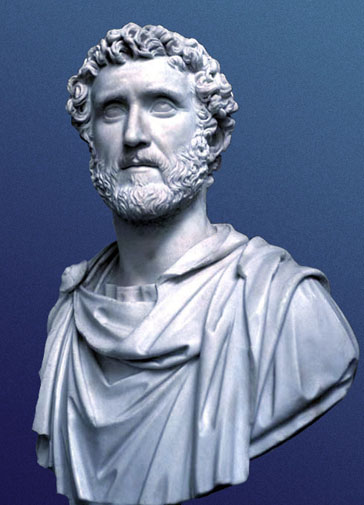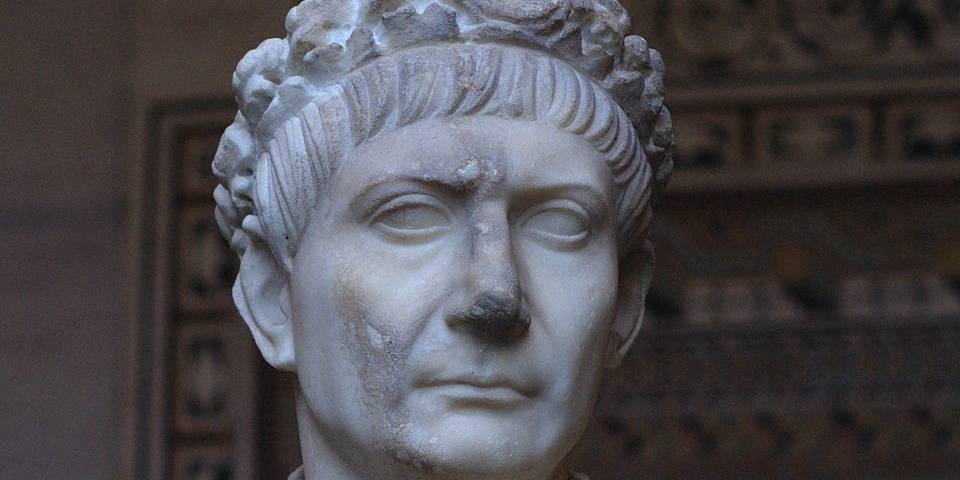Ancient Rome was one of the few historical periods that greatly impacted humankind. It influenced western civilizations, but traces of its influences can be seen almost everywhere. It may not seem obvious to some people, but the Romans influenced the alphabet, the political systems, the calendar, social welfare, and more. Moreover, they influenced the law, language, literature, technology, science, art, and architecture we have today.
The Roman emperors started their rule after the Roman Republic ended. The legitimacy of a Roman emperor’s rule depended on the recognition of the Senate and the emperor’s control of the military. The Roman Republic ended when Julius Caesar died, and the Roman Empire began with the reign of Augustus. The empire started in 27 BC and ended in 476 AD. Several emperors made significant marks during their rule, as you can read from the list below.
Justinian I (Justinian the Great)

Justinian I ruled the Eastern Roman Empire (Byzantine Empire) from 526 to 565 AD. Justinian I attempted to revive the greatness of the Roman Empire, and his great generals Narses and Belisarius managed to reconquer many parts of the lost Western Roman Empire that barbarians took in 476 AD. Included in the recovered areas was the city of Rome. Justinian I was called modern history’s ”last Roman” because of his activities.
Another feat of Justinian I was the creation of the Justinian Code, a unified code of law based on the Roman laws already in use. It later became the basis of all the systems of laws used in the Western world. In addition, he was the overseer of the construction of several notable buildings in Rome and Constantinople, particularly the world-famous Church of Hagia Sofia. For many centuries, the church was the center of Eastern Orthodox Christianity.
Constantine the Great

Flavius Valerius Aurelius Constantinus Augustus was the full name of Constantine the Great. He was history’s first Christian Roman Emperor (306 to 337 AD) and an important ruler in history. Constantine was able to reunite the divided Roman Empire and had significant wins against strong enemies such as the Sarmatians, the Goths, Alemanni, and the Franks. He occupied many Roman provinces lost by other Roman rulers and created Constantinople to become the empire’s capital. For several centuries, the Byzantine Empire’s capital was Constantinople. He adopted the Christian faith because he needed the support of the Christians. Constantine the Great was behind the construction of the Church of the Holy Sepulcher at the site claimed to be the location of the tomb of Jesus in Jerusalem.
Antoninus Pius

Ruling the Roman Empire from 138 to 161 AD, Titus Aurelius Fulvius Boionius Arrius Antoninus Pius was the adopted son of Emperor Hadrian. He was one of the empire’s peaceful emperors because there were no significant military actions during his time. One of the first things Antoninus Pius did after becoming emperor was to request the senate to bestow divine honors to Hadrian, which the senate previously refused. The title “Pius” was added to his name because of his efforts to persuade the senate to grant the honors to Hadrian.
Antoninus Pius built mausoleums, theaters, and temples. He likewise promoted science and the Roman arts and granted financial rewards and honors to teachers of philosophy and rhetoric. Although minor military conflicts occurred during his reign, he managed to deal with them without leaving Italy.
Vespasian

One of Ancient Rome’s greatest emperors was Titus Flavius Vespasianus, popularly known as Vespasian, who ruled the empire from 69 to 79 AD. He was also the founder of the Flavian dynasty that ruled the empire for 27 years, starting with his son, Titus.
Vespasian rose from the ranks as he was from an equestrian family. Nevertheless, he became one of the empire’s great leaders because of his military successes. He started his reign when Rome was still recovering from the chaotic reigns of Nero and Caligula, compounded by civil war. Vespasian brought balance to Rome.
Vespasian started the construction of the Temple of Peace. He ordered the construction of one of the most remarkable structures in Ancient Rome, the Colosseum, in 72 AD. However, he died (purportedly from diarrhea) in 79 AD. His son and successor, Titus, continued the project to its completion in 80 AD.
Hadrian

Hadrian, whose birth name was Publius Aelius Hardianus, was Rome’s emperor from 117 AD to 138 AD. He was one of Ancient Rome’s greatest emperors. Historians considered him the empire’s most influential ruler. He secured Rome and its borders and displayed novel engineering feats such as the construction of the 73-mile-long defensive fort called Hadrian’s Wall, most of which you can still see in Britain. He likewise ordered the construction of the Temple of Venus and Roma and rebuilt the Pantheon.
Hadrian was close to the military and spent most of his time with them. He was often seen wearing military clothes and trained his soldiers by raising false alarms to test their alertness and responsiveness.
Marcus Aurelius

Emperor Marcus Aurelius’ full name was Marcus Annius Verus. Through adoption, he became known as Marcus Aelius Aurelius Verus Caesar. However, his name was changed when he ascended the throne to Marcus Aurelius Antoninus Augustus. Marcus Aurelius was the last of the Five Good Emperors of Ancient Rome. He was also known as a Stoic philosopher who created several philosophical writings. He wrote a book, Meditations, which historians regard as a masterpiece. His book was a literary memorial to the theory of service and duty. It describes how a person can find and uphold equanimity amid conflict by using nature as a source of inspiration and guidance.
He ruled the empire from 161 AD to 180 AD, and during his reign, the Roman Empire defeated the eastern realm of Parthian and the Marcomanni Quadi of central Europe. His armies likewise defeated the Sarmatians during the Marcomannic Wars.
Trajan

Trajan, whose birth name was Marcus Ulpius Trajanus, ruled the Roman Empire from 98 AD to 117 AD. He was the second emperor who ruled during the empire’s golden age (Nerva-Antonine dynasty). The Roman senate declared Trajan as the best ruler or optimus princeps. According to historians, Trajan ranked second among the Five Good Emperors of Ancient Rome (Nerva, Trajan, Hadrian, Antoninus Pius, and Marcus Aurelius).
Trajan’s rule marked the peak of the Roman Empire’s geographic expansion that reached across Europe to Asia and Africa. Aside from Trajan’s military successes, he led several building projects, such as the iconic Trajan’s Column. Likewise, he expanded the financial aid programs for the poor started by Augustus.
Caesar Augustus/Octavian

Caesar Augustus, or Octavian, was born Gaius Octavius Thurinus, who officially ruled as the first emperor of the Roman Empire. He founded the Roman Principate, the first phase of establishing the empire. His reign started in 27 BC and ended in 14 AD. Historians considered him the greatest ruler of the empire. Octavian established Pax Romana, a period of peace in Rome, which led the arts, agriculture, and economy to flourish. In addition, he found several reforms.
Julius Caesar, who adopted him and made him his heir, was his maternal great-uncle. His relationship with Julius Caesar earned him the loyalty of his uncle’s legions. He led the enlargement of the Roman Empire by annexing Egypt, Raetia, Noricum, Pannonia, Dalmatia and many places in Africa. His armies completed the conquest of Hispania in 19 BC and turned it into a training and testing ground for his armies and their military tactics.
Gaius Julius Caesar

The last ruler of the Republican era of Rome was Gauis Julius Caesar (49 BC to 44 BC), but technically, he was not considered an emperor. However, it is impossible to mention Rome’s history without mentioning Julius Caesar. He ruled during Rome’s transition from a republic to an empire. Julius Caesar was a victorious general who led the conquest of Gaul and Spain, expanding Rome’s wealth, power, and size. During his rule, he increased the size of the senate for more citizen representation, created the Julian calendar, redistributed wealth among the poor, and granted citizenship to people already living under the rule of the Romans. While many of his deeds made him popular among the ordinary people, he became alienated from the elite. The senators considered him a tyrant who will abolish the Senate, which became one of the primary reasons for his assassination.
Diocletian

Diocletian, whose full name was Gaius Aurelius Valerius Diocletianus, was Rome’s emperor from 284 AD to 305 AD. Romans best remembered him for saving the empire from the Crisis of the Third Century. The crisis lasted for nearly 50 years and was marked y invasions, rebellions due to political instability, and civil war. The Roman Empire almost collapsed during that crisis.
Diocletian rose from the army’s ranks. After he was named emperor, he realized that the empire was too big for one person to administer, as there were many things to attend, and revolts to suppress each week.
Many historians believe Diocletian’s implementation of the tetrarchy form of government was his most valuable achievement. Under this form of government, four leaders ruled the empire. Augustus emperors ruled in the east (Diocletian) and west (Maximian), and two junior co-emperors or Caesars headed the north and south (Galerius and Constantius).
Tiberius

Tiberius Claudius Nero was the adopted son of Augustus (Octavian). He later took the name Tiberius Caesar Augustus when he became the Roman Empire’s second emperor. While he was not interested in being an emperor and politician, he was famous for conquering and expanding the empire’s territory, especially his conquest of many parts of Germany and Croatia.
During his reign from 14 AD to 37 AD, Tiberius enriched the imperial treasury with about three billion sesterces. However, Tiberius did not spend money on costly conquests. Instead, he built several bases and employed diplomacy. The innovations implemented by Tiberius led to a more consolidated and stronger empire.